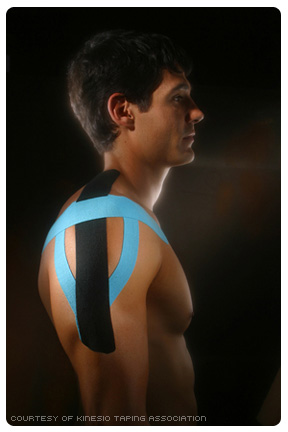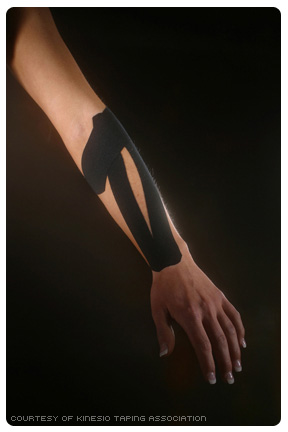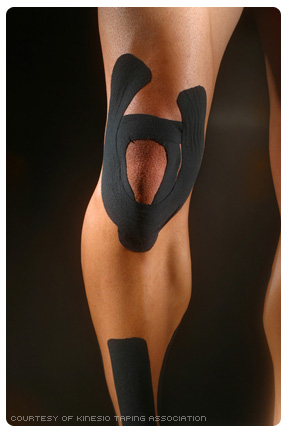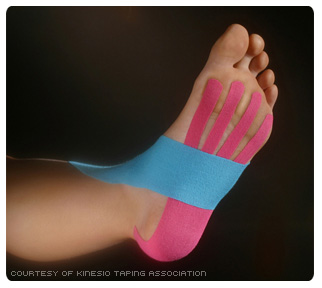

The skin is not simply a coat we wear, but a well-organized sensory organ that is receptive to stimuli, communicating information about the enviroment to the peripheral and central nervous system. It is physically connected to deeper structures via layers of fascia. Therapeutic Taping on the skin affects the skin.
The skin is our first layer of defense and protection against the environment. It responds quickly to changes in tensile or compressive forces. It communicates a message immediately to the sensory cortex of the brain that the enviroment has changed. Pain relief through the Therapeutic Taping Method at the skin level provides a window of opportunity to address other goals such as improving strength and function.
Therapists educated in the Therapeutic Taping Method assess patients and may apply tape to influence tissues in and around skin, fascia, muscle, joints, and circulatory-lymphatic ststem. Each Therapeutic Taping application has a therapeutic tension range governed by the intension of the application. Even the cut of the tape influences treatment.
Ask about the various Therapeutic tapings for specific medical conditions that you might have. There may be relief for you with the tape.


WEARING THE TAPE
Therapeutic tape is water resistant, yet breathable, allowing it to be worn for intense exercise, bathing, showering, or even swimming. It dries quickly and seldom causes skin irritation. When properly applied, most therapeutic tape applications will last for 3-7 days, sometimes even longer.
1. To dry tape that has become wet, pat gently with a towel. Do not use a hair dryer - the adhesive is heat-activated, and may become difficult to remove. Any ends that begin to peel can be trimmed with scissors to prevent further peeling.
2. Therapeutic tape is made from cotton with a hypoallergenic acrylic adhesive. It contains no latex or medications, decreasing the likelihood of skin irritation. Individuals with extremely sensitive skin, however, may still experience rash, itching or irritation. The following products have been reported to minimize skin irritation when applied and allowed to dry prior to take application: Benadryl Itch Stopping Gel, Maalox, Tens Clean Coat Skin Wipes.
3. Techniques for removing the tape include: (a) pressing on the skin at the end of the tape area while gently rolling or peeling the tape back, (b) pulling tape edge back gently sliding index finger back and forth where the tape joins the skin. It is more comfortable to remove tape in the direction of hair growth, which is usually away from the center of the body on the trunk, and in a downward direction on the arms or legs. Tape that is still strongly adhered to skin after 5 days may be loosened by soaking with baby oil or olive oil for 15-20 minutes before removing.
4. It can be difficult to get tape to stick well on areas that sweat heavily, like the soles of the feet. Tape on areas that are rubbed by clothing or equipment, or receive repeated body contact can also come off prematurely, despite the best precautions.

